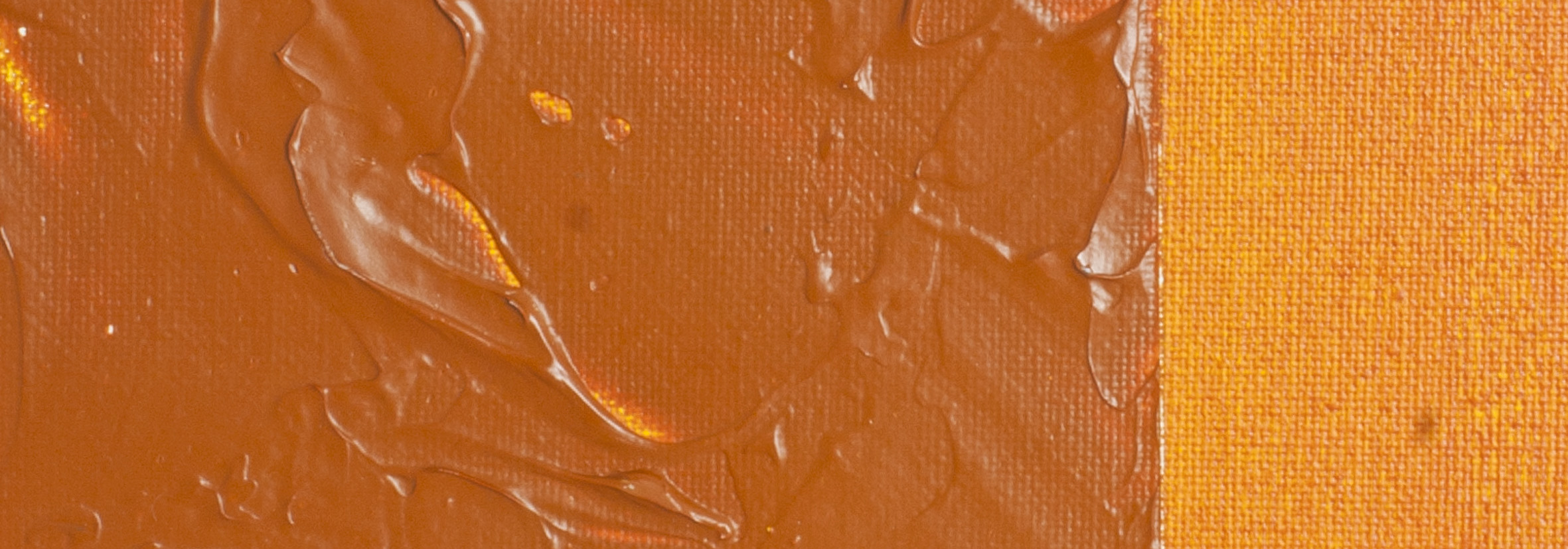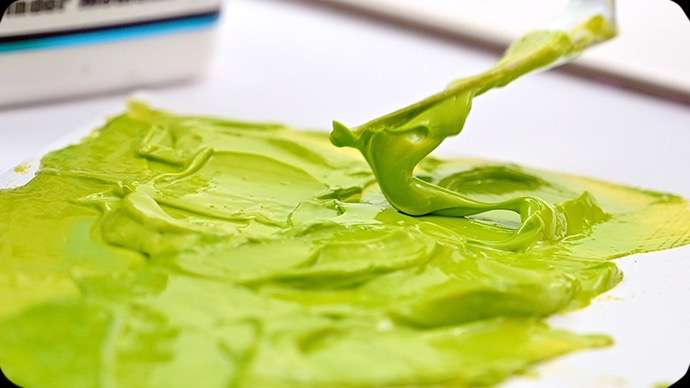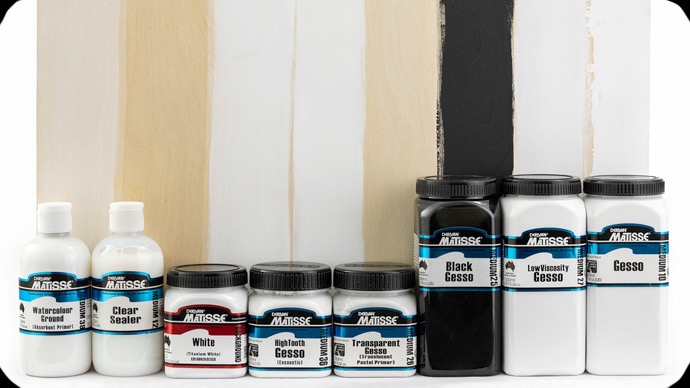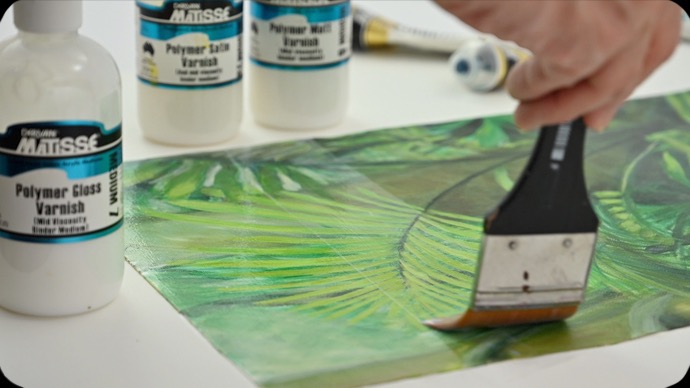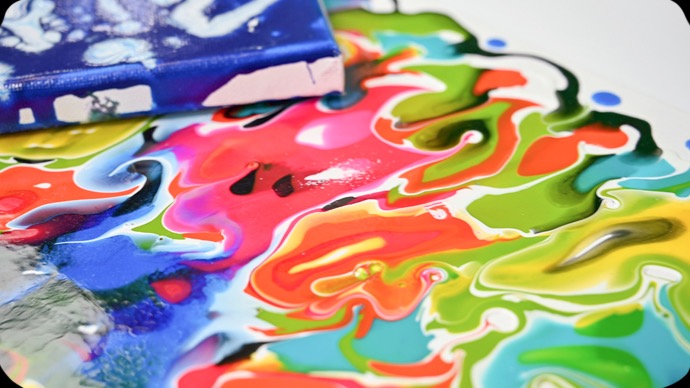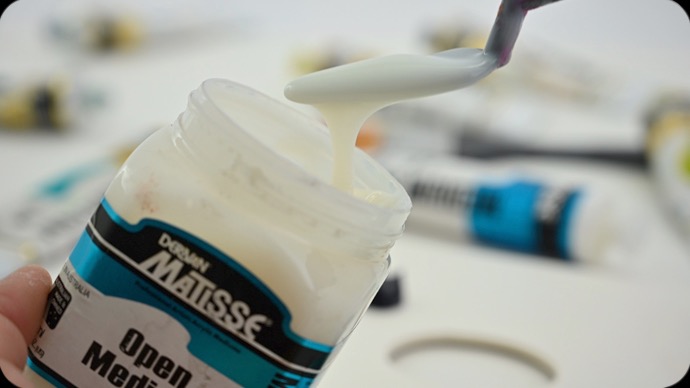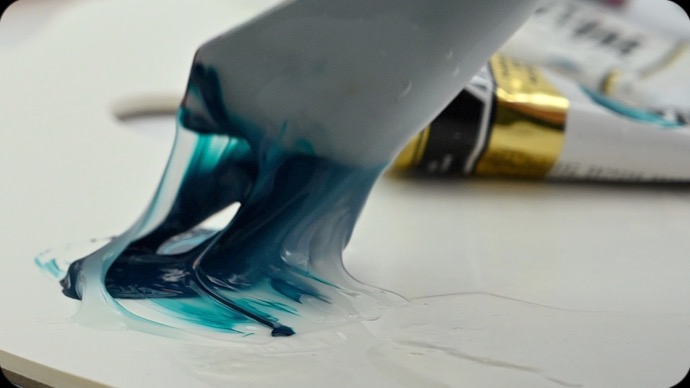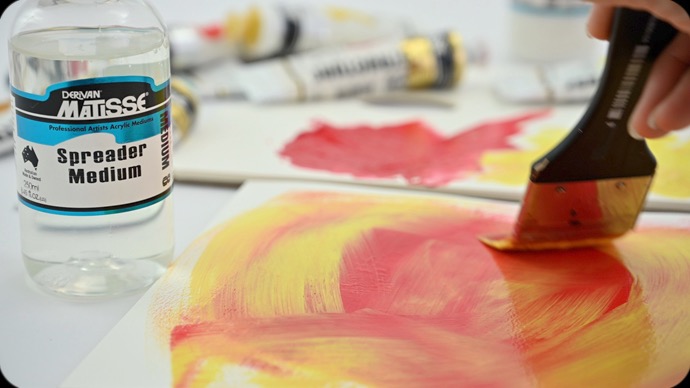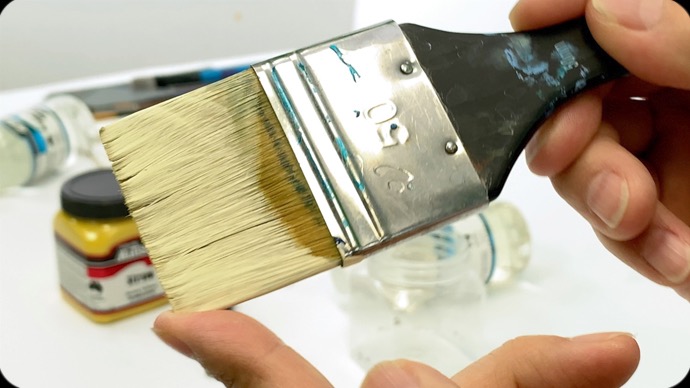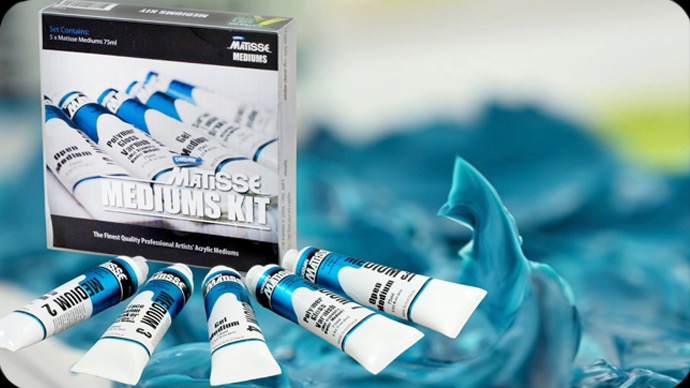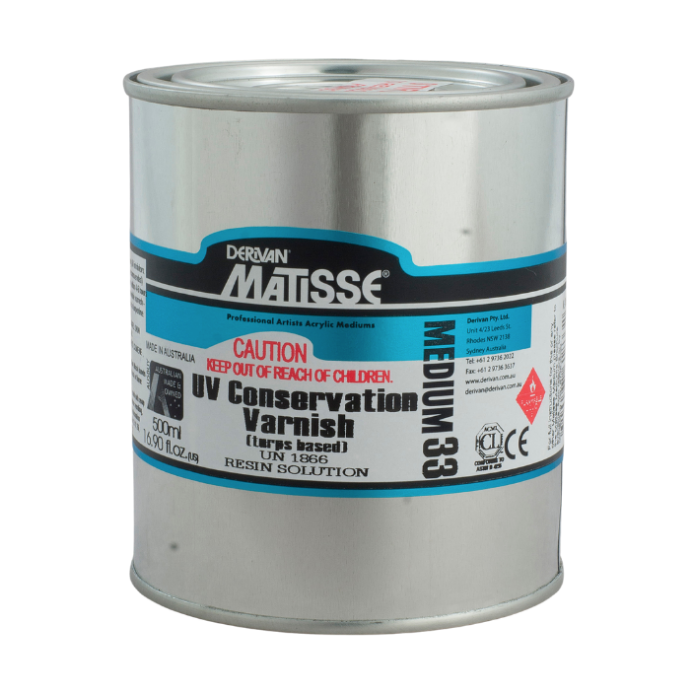
Matisse MM33 UV* Conservation Varnish produces a hard, non-yellowing, UV protected coating similar in appearance to Damar varnish. It will slow the rate of fading of printed material as it reduces UV light spectrum by more than 99%.
Easily dissolved with mineral turpentine, this varnish can be removed without any impact if applied over Matisse Acrylic paints. If used over other brands of acrylic paint a patch test in an inconspicuous area is recommended.
Available in 250ml and 500ml sizes.
*the term UV refers to Ultra Violet radiation present in artificial and natural sources such as sunlight and often manifests itself as discoloration or fading, cracking, and, sometimes, total product disintegration if cracking has proceeded sufficiently.
How to Use it:
MM33 UV Conservation Varnish is easily applied with a soft bristled brush. It does not need to be diluted and can be used straight from the container. The size of brush chosen will depend on the area to be varnished and the dimensions of the artwork. Apply in light coats moving quickly over the surface. Avoid over working the varnish as the surface may become matted if brushing continues as the varnish begins to dry. Two coats of UV Varnish are recommended, ensuring that the first coat is thoroughly dry before a second application. Under regular conditions (20C), this varnish should be dry within 4-6 hours. If uncertain, leave to dry for 24 hours before applying the next coat.
General Varnish Application Tips:
-
UV Conservation Varnish can be applied over Oils, Alkyds, Acrylics and printed surfaces. It is highly recommended a test piece should always be done when applying over a non-Matisse product and especially on printed surfaces.
-
Varnishes should only be applied over completely dry surfaces.
-
Make sure you work in a well ventilated area and children and pets are not in the immediate surroundings.
-
Ensure the surface is dust and hair free by wiping with a dry, clean cloth.
-
Apply the varnish with a soft bristled brush to create a smooth, even finish. The method of brush application, be it in horizontal, vertical or crisscross strokes is a matter of personal preference. It is best to try each method to see which one works best for you.
-
Varnishes are best applied when the item is horizontal. This will prevent the varnish dripping and running down the surface.
-
A couple of lighter coats are more effective and less problematic than applying a single, thick coat.
-
Apply each coat of varnish in one sitting to the whole painting. This will minimise any contrast between areas that have been varnished on separate occasions.
Cleaning Up:
Clean up your equipment as soon as you have finished application. Mineral turpentine is recommended to remove this varnish from brushes and hands. It is advisable to rinse brushes in clean warm soapy water, so bristles remain soft and all residue from varnish and solvents is removed. Wash skin thoroughly with soap and water after removal.
Removal:
Be aware that any removal of varnish layers procedure should be carefully undertaken as this will affect directly the painted surface and may change, and in some cases even damage, the substrate if improperly handled. If in doubt, this process should be left to specialised conservators particularly with works of high value, whether sentimental or financial.
As the removal procedure of varnishes involve the use of solvents, please consider wearing protective clothing and equipment and work in a well ventilated area.
UV Conservation Varnish can be easily removed with mineral turpentine if used over Matisse Acrylic Structure and Flow formulas. Apply the mineral turpentine directly to a thick, soft, low-lint cloth and lightly buff the surface until the varnish begins to dissolve. With another clean cloth dampened in turpentine gently pat the surface to remove the varnish and clean the area worked on. A patch test in an inconspicuous area is recommended if removing this varnish from non-Matisse brand acrylic paint. Be aware that vigorous rubbing may cause any acrylic paint to lift during varnish removal.
Other Uses:
To use UV Conservation Varnish as a retouch varnish for oil paintings, mix with 50% mineral turpentine. Retouch varnish is known as a temporary varnish. It gives the artist and indication of what dried colours would look like when wet, so the painting can be continued with colour accuracy. It is not a final varnish.
Tech Summary
The UV protectors serve two important purposes. Firstly it acts as a “radical scavenger”. The UV protectors scavenge and trap the radicals and convert them into harmless ketones and alcohols. The second purpose it to absorb UV light and convert it into heat. Both these combined protect against color change of the substrate and gloss reduction of the varnish itself when exposed to UV. The UV protectors are re-generating, and depending on the exposure of the coating, will continue to protect it for many years. This product uses a combination of two technologies to provide maximum protection, HALS and UV-A. HALS (hindered amine light stabilizers) is what we call a 'radical scavenger'. It reacts with radicals initiated by thermo or photo-oxidative degradation caused by UV light. The HALS scavenges and traps the radicals and converts them into harmless ketones and alcohols. The main purpose of the HALS is to protect against gloss reduction, cracking, yellowing and chalking.
UV-A (Ultra Violet Absorber) absorbs the UV light and converts it into harmless heat. This mainly protects against colour change (fading), but also protects against delamination, blistering and gloss reduction.
Both the HALS and UV-A are re-generating - they continue to scavenge and absorb once the coating has formed. By using both HALS/UV-A synergistically together, you obtain maximum protection from UV degridation. Depending on the exposure of the coating, the HALS/UV-A will protect the coating for many years.
DISCLAIMER: Although Matisse Derivan products are formulated to the highest standards and extensively tested, we strongly recommend a small test be undertaken before any varnish is being applied to the final surface. If you have any questions regarding the use or application of any Matisse Derivan products, please contact us on: (02) 9736 2022 or email your query to [email protected]
Safety Data Sheet (SDS-GHS Compliant)
To view or download a copy of MM33 SDS, please CLICK HERE* (986kb) *The above link will open an external Dropbox window
AVAILABLE SIZES
 250ml, 500ml
250ml, 500ml
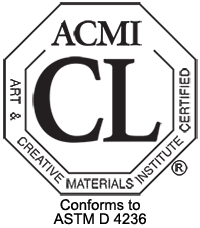
The CL (Cautionary Labeling) Seal identifies products that are certified to be properly labeled in a program of toxicological evaluation by a medical expert for any known health risks and with information on the safe and proper use of these materials. These products are also certified by ACMI to be labeled in accordance with the chronic hazard labeling standard, ASTM D4236. Products with this seal are not hazardous if used correctly. It is important to read the product label in full before opening a product that has the CL Seal. These products should never be given to children 3 years or under or anyone with a physical or mental handicap who is unable to read and understand safety labeling on packages.
WARNING: COMBUSTIBLE, MAY BE HARMFUL IF SWALLOWED. VAPOUR HARMFUL. SKIN IRRITANT. EYE IRRITANT. CONTAINS ALIPHATIC HYDROCARBONS <60%
PRECAUTIONS: KEEP AWAY FROM SPARKS AND OPEN FLAMES - NO SMOKING. WEAR PROTECTIVE GLOVES AND EYE AND FACE PROTECTION. WASH HANDS THOROUGHLY AFTER HANDLING. DO NOT DRINK, EAT OR SMOKE WHEN USING THIS PRODUCT.
STORAGE: STORE LOCKED UP IN A WELL VENTILATED PLACE. KEEP COOL. DISPOSAL: DISPOSE OF CONTENTS AND/OR CONTAINER ACCORDING TO LOCAL REGULATIONS.
IF SWALLOWED: IMMEDIATELY CONTACT A LOCAL POISON CONTROL CENTRE. IN AUSTRALIA ph: 13 11 26; IN NEW ZEALAND ph: 0800 764 766; IN US ph: 1-800-222-1222 OR DOCTOR/PHYSICIAN. RINSE MOUTH. IF ON SKIN (OR HAIR): TAKE OFF CONTAMINATED CLOTHING AND WASH BEFORE RE-USE. IF SKIN IRRITATION OCCURS, GET MEDICAL ADVICE OR ATTENTION. RINSE SKIN USING PLENTY OF SOAP AND WATER. IN CASE OF FIRE: USE POWDER OR DRY CHEMICAL FOR EXTINCTION. DO NOT USE WATER AS THIS MAY SPREAD THE FIRE.
Mediums by Category
BACK TO MEDIUMS
SEE BELOW FOR LIST OF MATISSE MEDIUMS - Quick links

To install this Web App in your iPhone/iPad press ![]() and then Add to Home Screen.
and then Add to Home Screen.
